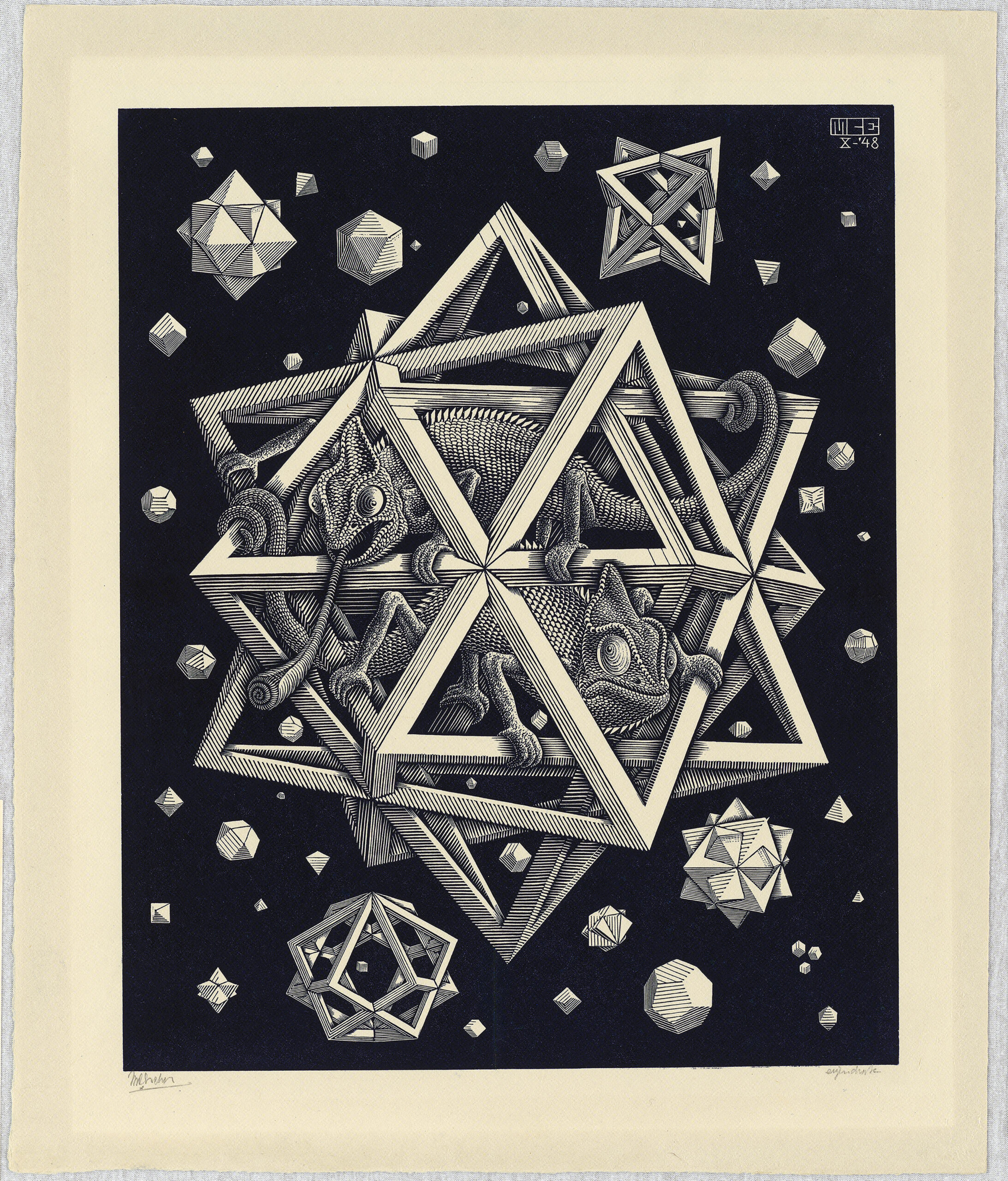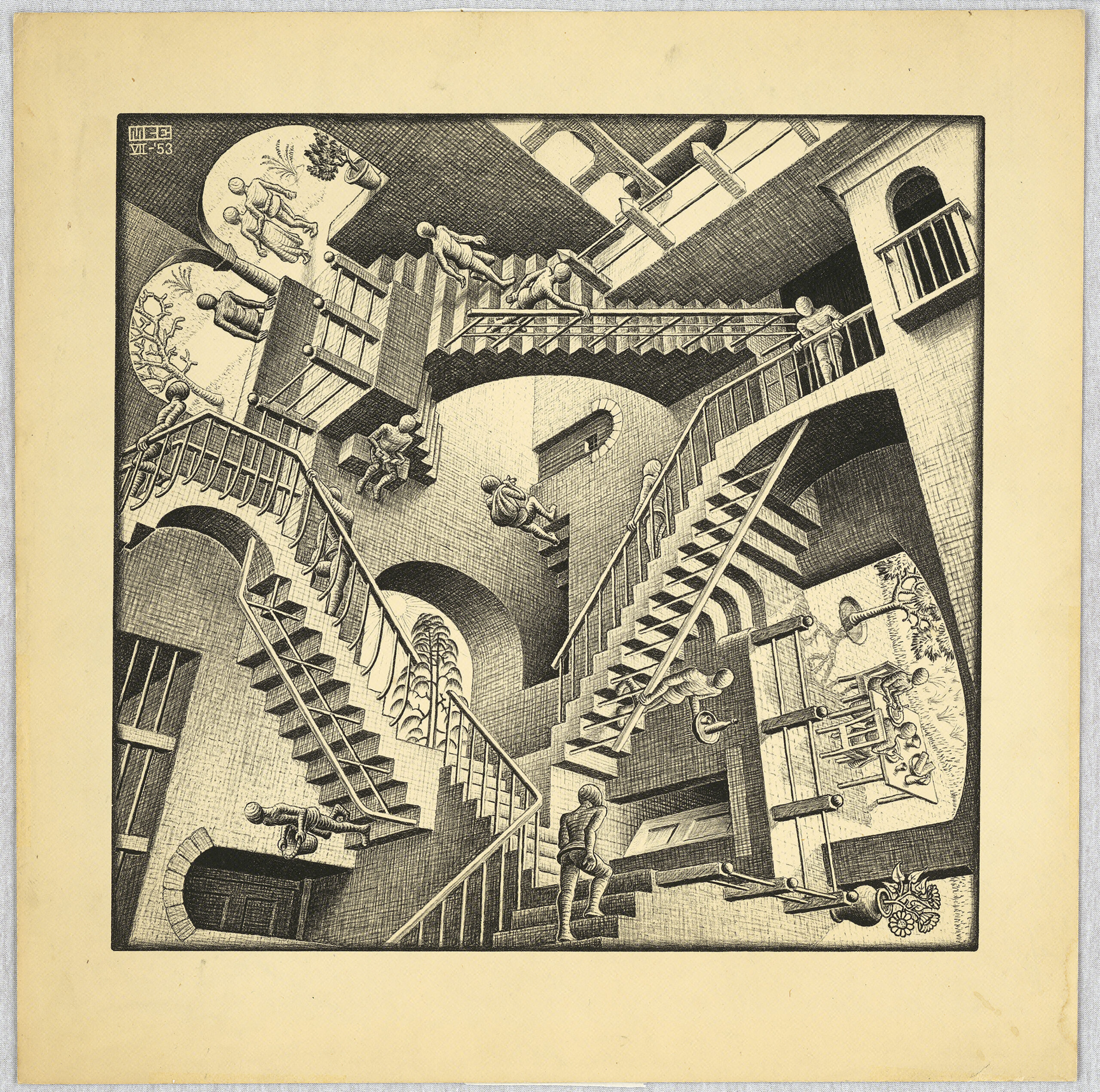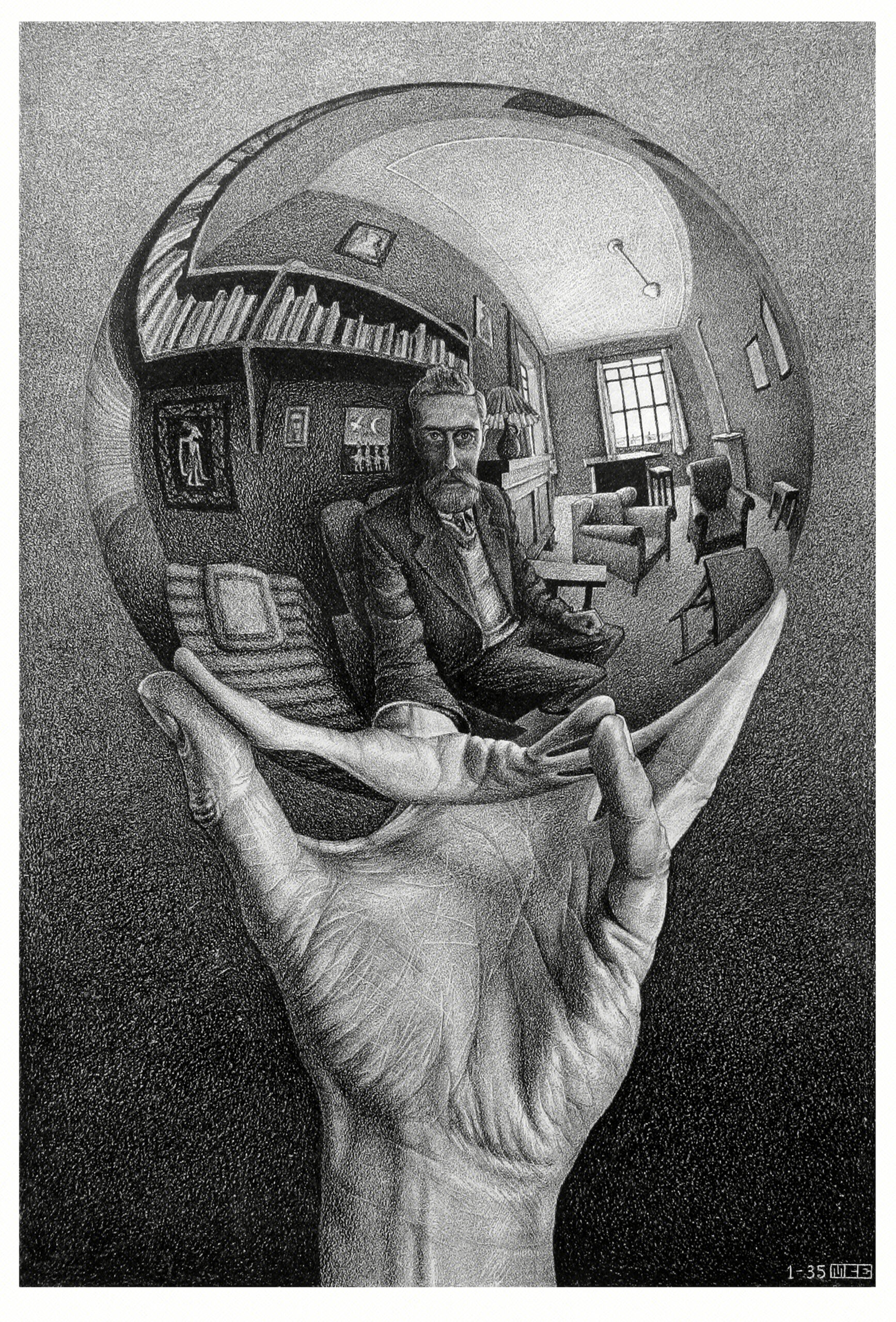FAMOUS DUTCH ARTIST ESKER Exhibition in Rome
By: Ekaterina Khudenkih
On October 31, 2023, exactly 100 years after the Dutch artist’s first visit to the capital of Italy in 1923, Escher returns to Rome with the largest and most complete exhibition ever dedicated to his work, which is taking place at Palazzo Bonaparte. A restless, reserved and undoubtedly brilliant Dutchman, Escher is the artist who, with his engravings and lithographs, always was and continues to be the unique one in his ability to transport us into an imaginative and impossible world, where art, mathematics, science, physics and design are mixed. A relatively modern artist, Escher has won over millions of visitors around the world thanks to his craft to speak to a very wide audience. Escher is loved by those who know art, but also by those who are passionate about mathematics, geometry, science, design, graphics. A great number of themes converged inhis works makes him unique in art history.




The exhibition in Rome is an exceptional event that presents to the public, in addition to his most famous masterpieces, also numerous unpublished works never exhibited before. An anthology of about 300 works that includes the iconic “Hand with Reflecting Sphere” (1935), “Bond of Union” (1956), “Metamorphosis II” (1939), “Day and Night” (1938), the famous “Emblemata” series, and many others. In addition, there is also a reconstruction of the studio that Escher had in Baarn in Holland which, here in Rome, exhibits the various original instruments with which the Master produced his works and the portable easel that Escher brought with him on his wanderings around Italy. After several trips to Italy that began in 1921 when he visited Tuscany, Umbria and Liguria, Escher arrived in Rome where he lived for twelve years, from 1923 to 1935 The Roman period had a strong influence on all his subsequent work, which saw him prolific in the production of lithographs and engravings, especially of landscapes, architecture and views of that ancient and baroque Rome that he loved to investigate in its most intimate dimension in the dim light of a lantern. On display at Palazzo Bonaparte, there are complete series of 12 “Roman nocturnes” produced in 1934 – including “Colonnade of St. Peter’s”, “St. Nicholas in Prison”, “Small Churches, Piazza Venezia”, “Santa Francesca Romana”, “The Dioscuri Pollux” – along with other works
representing the glories of ancient Rome such as Rome (and the Griffin of the Borghese) of 1927, San Michele dei Frisoni, Rome (1932) and Between St. Peter’s and the Sistine Chapel (1936).








